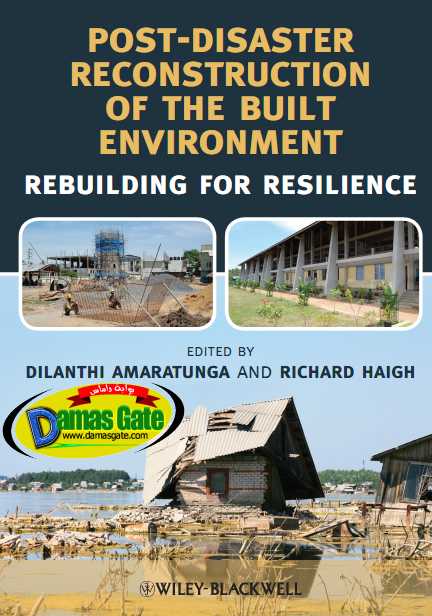Post-Disaster Reconstruction of the Built Environment Rebuilding for Resilience
Introduction
Richard Haigh and Dilanthi Amaratunga
With growing population and infrastructures, the world’s exposure to hazards
– of both natural and man-made origin – is predictably increasing. This
unfortunate reality will inevitably require frequent reconstruction of communities,
both physically and socially. At the same time, it will be vital that any
attempt to reconstruct after a disaster actively considers how to protect people
and their environment to ensure those communities are less vulnerable in the future.

For the remainder of this book and in common with the Centre for Research
on the Epidemiology of Disasters (CRED), which maintains the International
Disasters Database (EM-DAT), a disaster is a ‘situation or event, which overwhelms
local capacity, necessitating a request to national or international level
for external assistance; an unforeseen and often sudden event that causes great
damage, destruction and human suffering’. For a disaster to be entered into
the database at least one of the following criteria must be fulfilled: 10 or more
people reported killed; 100 people reported affected; there is declaration of a
state of emergency; or, a call for international assistance.
Download
http://s18.alxa.net/s18/srvs2/02/001...Resilience.rar